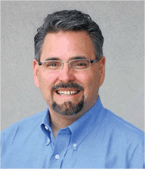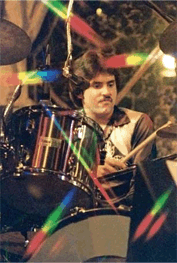Aviom President And CEO Carl Bader Makes Connections On Stage And Off
Bader began his career working as a musician in the Philadelphia area club circuit. Set up and tear down at gigs provided the inspiration for more efficient connectivity.
SCN: You began your career working as a musician in the Philadelphia area club circuit. Did your role as a performer pique your interest in any particular aspect of audio technology?
Carl Bader: Yes, since those days— and what great memories I have— I’ve always been interested in “performance” electronics, that is, the gear that is used to put on a show. My experience as a singing (and hard-hitting) drummer who always struggled with my own monitor mix led me directly to the A-16 Personal Mixing concept.
As another example, back in those days, my band mates and I would usually choose to be our own roadies, just to maximize our take-home cash. But it was a lot of work setting up and tearing down, especially for one-night gigs. This forced me to get interested in efficiencies, and I always found them in connectivity. I think we were the first club-level band in the Philadelphia area that had a multi-pin connector snake with FOH prewired case, including console, EQ, FX, etc., and pre-wired stage racks. Plug in a few multi-pins, wire the speaker stacks, run AC, and you were ready to play. I designed and built the system myself, including soldering or crimping every wire on all of those multipin connectors. Yes, my interest was piqued back then, and today, plugging in a tactical Cat-5 or a piece of fiber and lighting up hundreds of channels is literally a dream come true!
SCN: After earning your Bachelor’s degree in Electrical Engineering in 1985, you joined General Electric. What did your experience at GE reveal about design and project management?
CB: Two things come to mind. First, you need the right amount of red tape, the right amount of process. Coming from a bar band and going to GE, a company with hundreds of thousands of employees, was a great example of two ends of a spectrum. For eight years I played five or six nights a week with as many band mates, a long stretch with a small team by any measure. We didn’t have an employee handbook or a vacation policy. It was actually pretty gritty for a legitimate business, and the rules were simple: if you didn’t work, you didn’t get paid. GE, of course, was different. And once I got over the shell shock, I began to appreciate the need for process in a big company. Appreciating the notion of the right amount of process has helped me in all of my subsequent assignments, and particularly at Aviom as we grow our company and need to add (the right amount of) process to remain efficient.
The second thing was understanding the difference between liking and loving what you do. I really liked my job at GE, but throughout all of my years there I was always compelled to do something in performance. I was in part-time bands as a drummer or a singer, I rented out my PA system, I rented out my lighting system; I even DJed—anything to keep me on or near the stage. I later realized that, although I liked my work at GE, I didn’t love it, and I was seeking to fill that missing something—passion.

NAME: Carl Bader COMPANY: Aviom TITLE: President and CEO OVERTIME: Since his earliest days as a performing musician, Bader has been interested in “performance” electronics. His time on stage led to the development of Aviom’s renowned A-16 Personal Monitor Mixing System.
SCN: In 1995, how were you able to combine your design and management skills with a passion for performance and music products at Ensoniq?
CB: When I joined Ensoniq, it all came together for me: my love of technology, my love of music and performance, and my love of entrepreneurship. Ensoniq had it all. The technology we worked on is legendary, and the technologists I had the pleasure to work with there were world-class, especially when it came to the art and science of digital audio. I was suddenly working on performance products with a bunch of like-minded fanatics.
SCN: You co-founded Aviom in the spring of 2001 with several former colleagues from Ensoniq. The story since then is well known—Aviom’s origins in personal monitoring created a foundation for its eventual entry into audio networking with A-Net. What do you see happening next?
CB: Our plan is to continue to contribute to this industry that we love. Specifically, we’re developing additional Pro64 audio networking products that directly address the needs of under-fire performance applications for both installed and touring systems. Our hope is that these tools help designers stretch the current boundaries, and offer performers and audiences an enhanced show experience, where at least some of that show magic can be directly attributed to the technical pixie dust we make at Aviom.
SCN: How would you complete the following statement? In the CEO’s office, my goal for audio technology is... make real contributions to our industry while creating an atmosphere at Aviom that promotes creativity so we can continue to create groundbreaking solutions to old problems and continue to provide new science that allows the art to go beyond its current limits.
